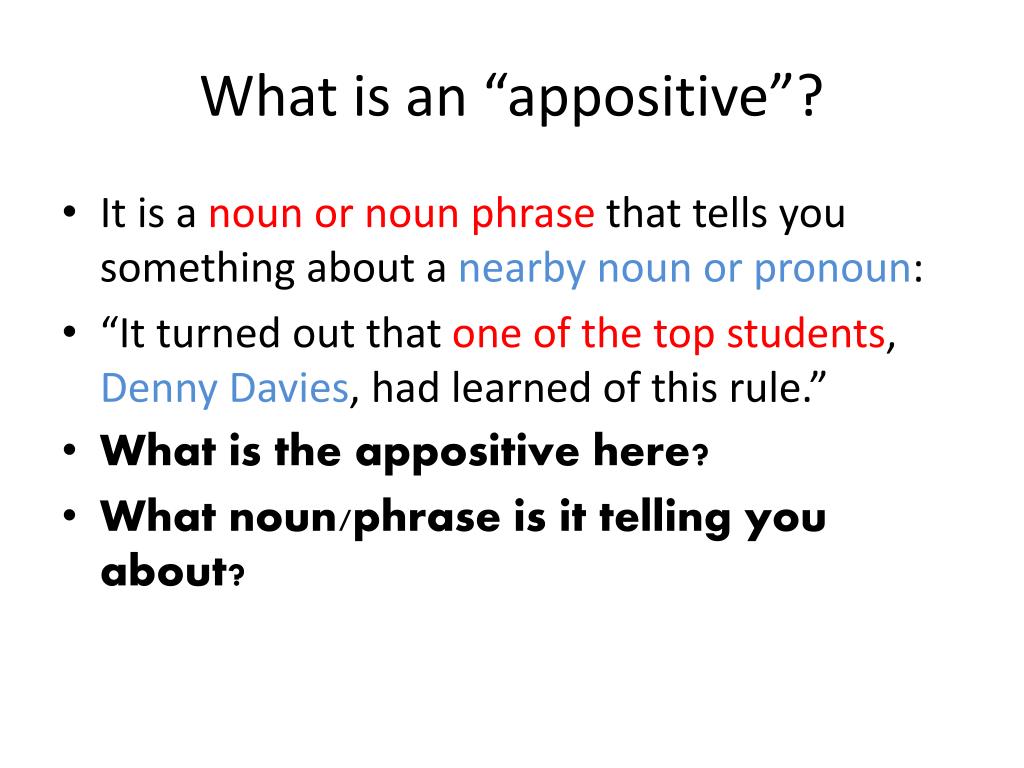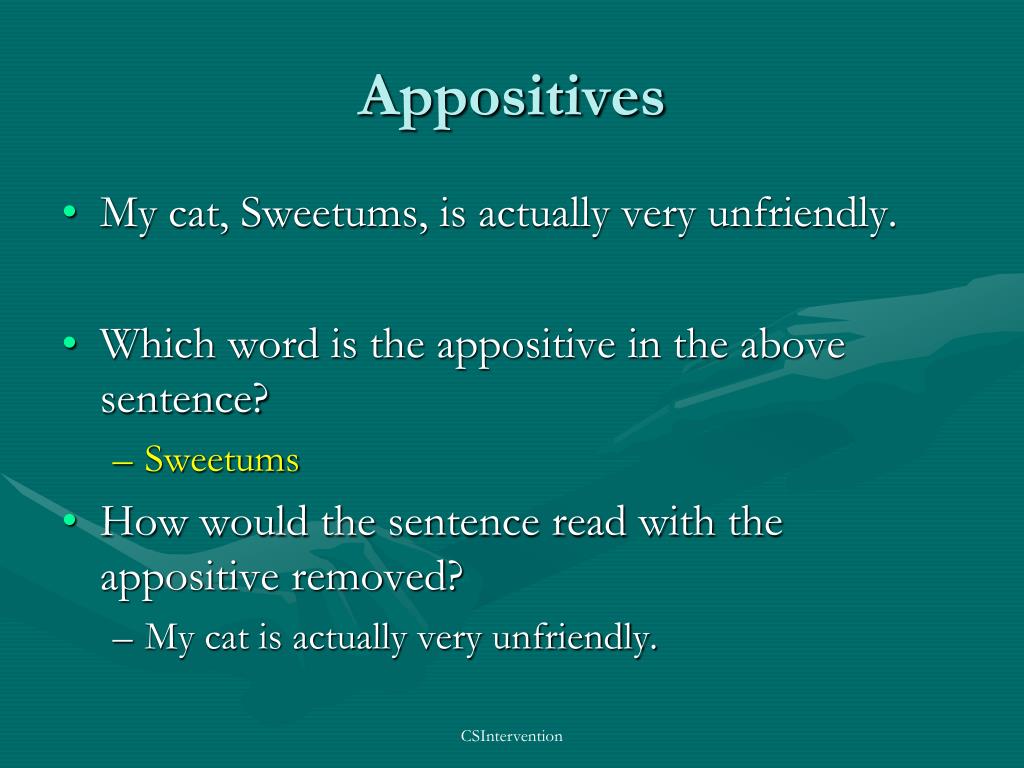

“The Volunteer State” is a nickname for Tennessee. Theresa is from Tennessee, the Volunteer State. I bought a new skirt, a short skirt with a sunflower pattern.Īlthough the appositive describes the skirt further, it is not necessary for basic understanding of the sentence.

Because it is unnecessary information, non-restrictive appositives are typically separated from the primary noun by commas. Non-restrictive appositives, on the other hand, provide additional information that is not necessary for understanding. Jacobs may teach a variety of classes, “Honors Biology” is considered a restrictive appositive.

Jacobs’ class, Honors Biology, is so hard!īecause Mrs. Because this appositive is necessary for full understanding of the sentence, it is restrictive. Without the appositive including Evan’s name, we have no idea just who this friend is.

Here are a few examples of restrictive appositives: Oftentimes, restrictive appositives are not separated by commas but connected to the primary noun. Restrictive appositives are considered absolutely necessary in understanding the primary noun presented. Here the appositive is the noun phrase “ a sweet little puppy unaware of his wrongdoing and still not quite housetrained.“Īs is shown in these two examples, appositives can be simple or complex and can appear in any part of the sentence. The appositive “ A two-year-old rambunctious puppy” precedes the noun “Brady.” Example 2Īngry at Brady, I began yelling but stopped when I looked at him, a sweet little puppy unaware of his wrongdoing and still not quite housetrained. “ a golden retriever” is an appositive to “ The puppy.” The word appositive is derived from the Latin phrases ad and positio meaning “near” and “placement.”Ī two-year-old rambunctious puppy, Brady ripped up a pillow while I was away for a moment in the kitchen. The puppy, a golden retriever, is my newest pet. Appositives are nouns or noun phrases that follow or come before a noun, and give more information about it.


 0 kommentar(er)
0 kommentar(er)
